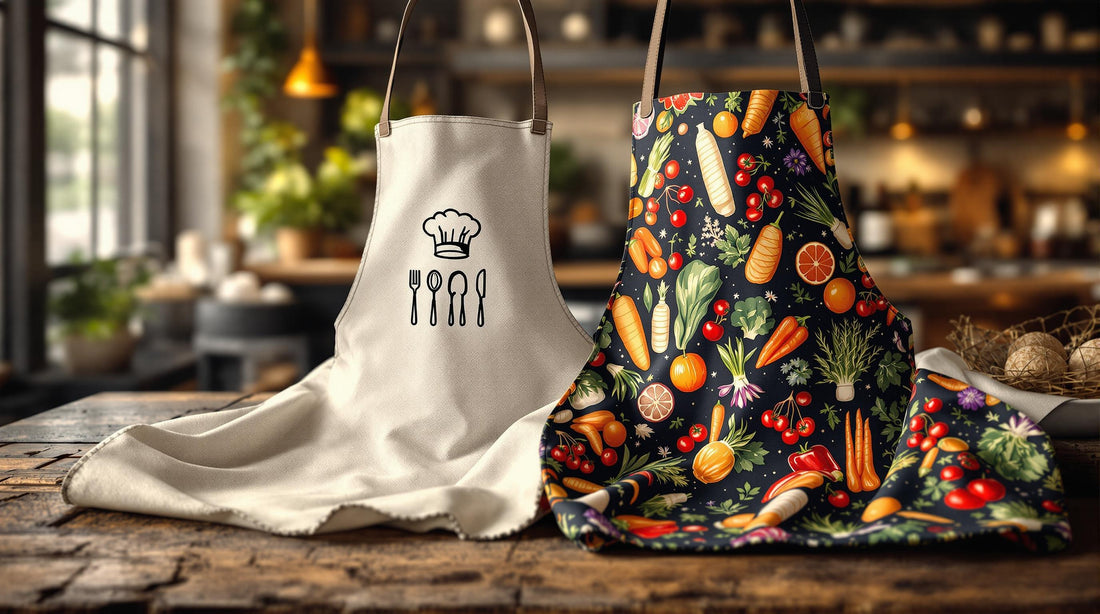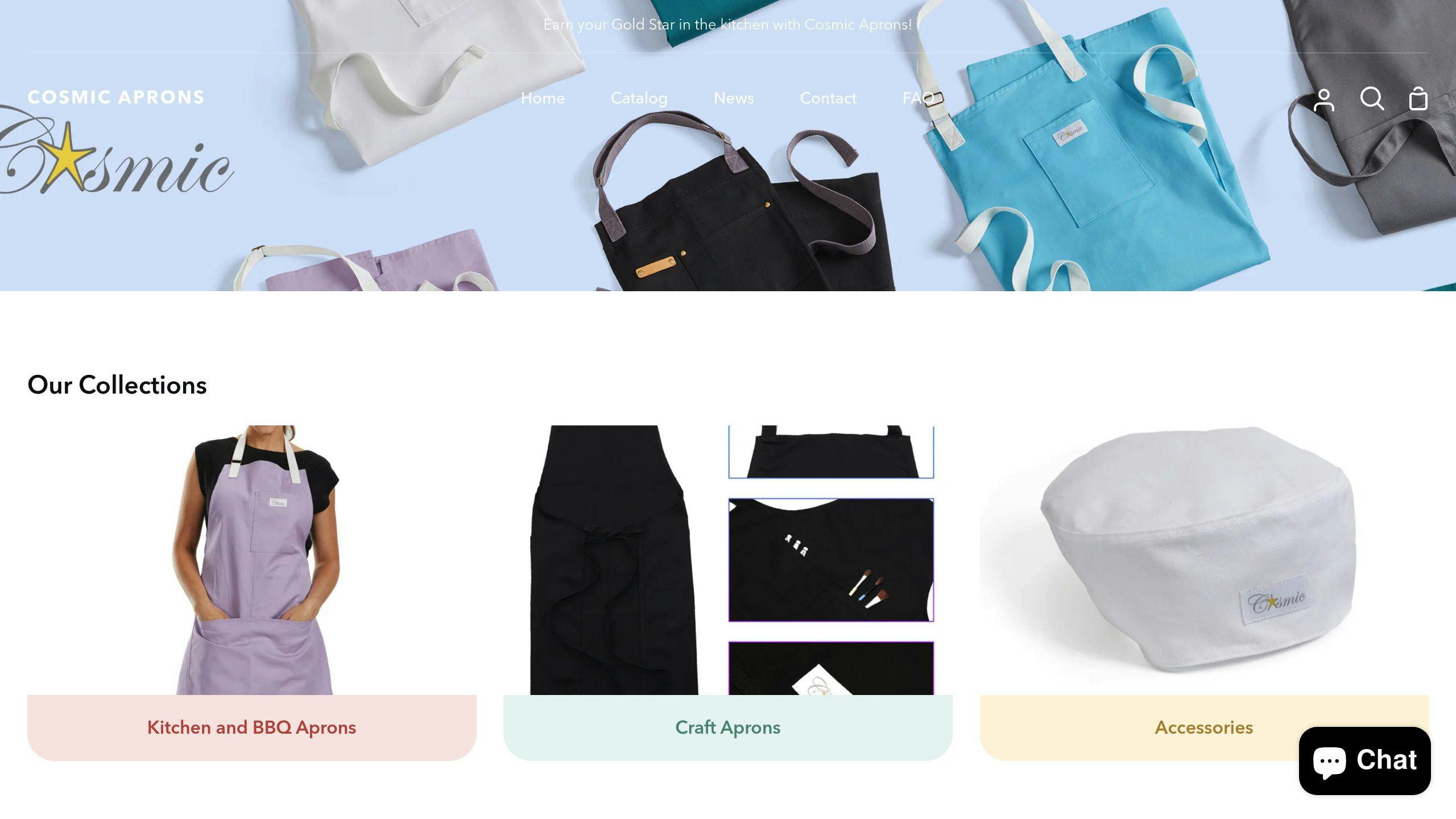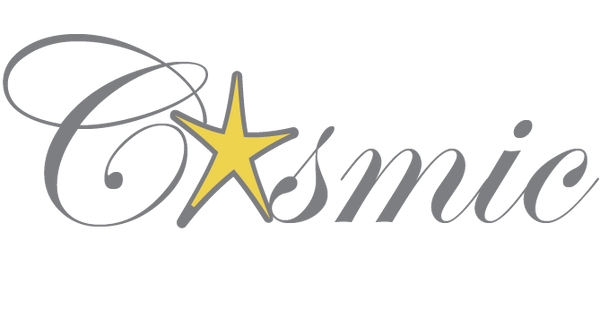
Embroidery vs. Printing for Bistro Aprons
Share
Embroidery and printing are two popular methods for customizing bistro aprons, each with unique benefits:
- Embroidery: Durable, textured, and professional. Best for upscale settings and heavy use.
- Printing: Bold, colorful, and cost-effective. Ideal for casual branding and large orders.
Quick Comparison
| Feature | Embroidery | Printing |
|---|---|---|
| Durability | Long-lasting, withstands washing | May fade or peel over time |
| Cost | Higher upfront cost, small orders | Budget-friendly for bulk orders |
| Design | Textured, premium look | Vibrant, detailed, multi-color |
| Best Use | Fine dining, corporate wear | Casual restaurants, food trucks |
| Fabric Match | Thick cotton for durability | Lightweight polyester blends |
Choose embroidery for a polished, long-lasting finish. Opt for printing if you need vibrant, large-scale designs on a budget.
Comparing Embroidery and Printing
Durability Comparison
Embroidery weaves designs directly into the fabric, making it long-lasting and able to withstand commercial laundering without losing its appearance. On the other hand, printing, which sits on the fabric's surface, is more susceptible to fading and peeling, especially after multiple washes. While durability is important, the overall cost often becomes a key factor in decision-making.
Cost Analysis
Embroidery tends to have higher upfront costs due to setup and the complexity of stitching. However, it's a sensible choice for smaller, detailed designs. Printing, in contrast, becomes more affordable as order quantities increase, making it ideal for large-scale projects. Beyond the price, the overall look of the finished product also plays a big role in determining the best option.
Aesthetic Differences
Real Thread highlights that embroidery
"adds a sophisticated, textured finish,"
making it a great choice for creating a premium feel. Printing, however, offers bold, vibrant designs with sharp details and gradients that embroidery might struggle to achieve. This makes it well-suited for casual branding or designs that require intricate color work. The right aesthetic choice will depend on your brand's style and target audience.
Here's a quick comparison of key features:
| Feature | Embroidery | Printing |
|---|---|---|
| Durability | Resistant to wear and washing | May fade or peel over time |
| Cost Efficiency | Ideal for small, detailed designs | Best for large-volume orders |
| Visual Impact | Textured, premium appearance | Smooth, vibrant colors |
| Best Use Case | Upscale settings, corporate wear | Casual branding, promotional items |
| Maintenance | Minimal care required | Needs gentler washing methods |
For items like heavy-duty aprons that demand durability, embroidery is a better fit. However, for lightweight fabrics where bold, colorful designs shine, printing is the way to go [2][1].
Print Vs Embroidery on Clothing: What's the difference?
Selecting the Best Customization Method
When deciding between embroidery and printing for bistro aprons, several factors come into play. Your choice should reflect your specific needs and the message you want to convey.
Matching Designs to Your Brand
The customization method you choose can shape how your brand is perceived. Think about how it fits with your establishment's vibe and what your audience expects:
| Brand Type | Recommended Method | Why It Works |
|---|---|---|
| Fine Dining | Embroidery | Adds a touch of elegance |
| Casual Restaurants | Printing | Offers more design options |
| Corporate Kitchens | Embroidery | Projects professionalism |
| Creative Cafes | Printing | Highlights artistic flair |
| Food Trucks | Printing | Budget-friendly branding |
After aligning your brand with a method, it's essential to evaluate how the materials and design details will impact the outcome.
Material and Design Considerations
The look and durability of your aprons depend on the combination of customization method, fabric, and design complexity. For instance, thick cotton aprons are great for embroidery because they provide a solid base for stitching. On the other hand, lightweight polyester blends often work better with printing, especially for vibrant and detailed designs.
Here’s a quick breakdown of what works best for each method:
Embroidery Works Well For:
- Small, detailed logos or text
- Simple patterns with clean lines
- Designs that benefit from added texture
Printing Works Well For:
- Large, bold graphics
- Photographic or highly intricate designs
- Multi-color artwork
The texture of the fabric also plays a role. Smooth fabrics are ideal for printing, ensuring crisp details, while textured fabrics can make embroidery stand out with added depth and dimension [2][1].
sbb-itb-c693c43
Embroidery vs. Printing: A Side-by-Side Comparison
Now that we've covered the factors influencing customization decisions, let's see how embroidery and printing compare across various key metrics. Here's a breakdown to help you choose the best option for your needs.
Comparison Table
| Feature | Embroidery | Screen Printing |
|---|---|---|
| Minimum Order | 3 pieces | 25 pieces |
| Design Size | Up to 4" x 4" | Up to 15" x 18" |
| Durability | Stands up to frequent washing without fading or damage | Works well for casual use but may fade over time |
| Cost Structure | - Base price includes up to 8k stitches - Extra $1.50 per 1k stitches |
- Costs rise with more colors - Better pricing for large orders |
| Design Complexity | - Best for simple logos and text - Limited color options |
- Handles intricate, multi-color designs - Up to 8 colors, great for photo-like images |
| Special Features | - Metallic threads - 3D puff effect - Textured finish |
- Reflective ink for visibility - Water-based options - Plastisol and puff effects |
| Professional Look | Offers a polished, premium feel | Bright and casual, great for relaxed settings |
| Production Time | Takes longer due to detailed stitching | Faster for bulk orders |
Your choice depends on your specific needs. For example, embroidery is ideal for upscale environments like a bistro where uniforms need to endure frequent washing. On the other hand, screen printing works well for casual settings like food trucks or events, where bold, colorful designs stand out.
Embroidery is perfect for smaller orders (minimum 3 pieces) but comes with higher per-piece costs. Screen printing, however, is more affordable for larger batches (minimum 25 pieces). By weighing these factors, you can pick the method that best fits your brand's goals, which we’ll dive into further in the next section.
Customization Options at Cosmic Aprons

Cosmic Aprons provides a range of customization options for bistro aprons, supporting both embroidery and printing methods. These aprons are designed with professional use in mind, featuring adjustable straps and tough fabrics that can handle the daily demands of busy kitchens.
Why Choose Cosmic Aprons?
| Feature | Advantage for Bistro Use |
|---|---|
| High-Quality Materials | Strong fabrics ideal for embroidery and printing |
| Flexible Designs | Supports both small embroidered logos and larger printed designs |
| Practical Features | Includes multiple pockets for kitchen tools and essentials |
| Expert Customization Help | Guidance on choosing between embroidery and printing based on branding needs |
| Order Versatility | Suitable for small or large order quantities |
Cosmic Aprons understands the specific needs of bistro environments. Their aprons are built to last, maintaining their professional look even after repeated washing. The team offers personalized advice, helping businesses decide on the right customization option by considering factors like brand style, durability, budget, and order size.
With expertise in both embroidery and printing, Cosmic Aprons ensures businesses can pick the option that aligns perfectly with their branding and operational goals.
Conclusion: Choosing Wisely
When deciding between embroidery and printing for bistro aprons, it comes down to durability, cost, and appearance - and how these align with your needs.
Embroidery offers long-lasting designs thanks to its woven threads, making it a strong choice for professional kitchens that demand durability. On the other hand, printing is often the more budget-friendly option, especially for larger orders.
When it comes to style, embroidery provides a textured, polished look that exudes professionalism. Printing, however, delivers bold and colorful designs that stand out visually [1]. Upscale venues often lean toward embroidery, while casual eateries may opt for printing's flexibility.
Here are some factors to weigh in your decision:
- Usage Intensity: Embroidery holds up better under heavy use.
- Brand Positioning: Embroidery works well for premium branding.
- Budget: Printing is a cost-effective solution for bulk orders.
- Design Needs: Printing excels with intricate or highly detailed designs.
Think about your immediate requirements and long-term goals. For high-traffic, demanding environments, embroidery's durability is a clear winner. For more casual settings, printing offers bold designs without straining your budget [2][1].
FAQs
Is embroidery a type of print?
No, embroidery and printing are two separate methods for customizing bistro aprons [2]. Embroidery involves stitching textured designs directly into the fabric, while printing adds flat designs onto the fabric's surface [1].
Here’s how they differ:
- Embroidery creates raised, three-dimensional patterns that are part of the fabric.
- Printing results in flat, two-dimensional designs that rest on the surface.
Embroidery is known for its durability, as the designs are stitched into the fabric. On the other hand, printing is ideal for detailed, colorful designs and tends to be more budget-friendly [1][2]. Choosing between these methods depends on your specific branding needs and whether the aprons are for professional or casual use.
